Varieties of ceramic tiles for the kitchen and recommendations for its selection
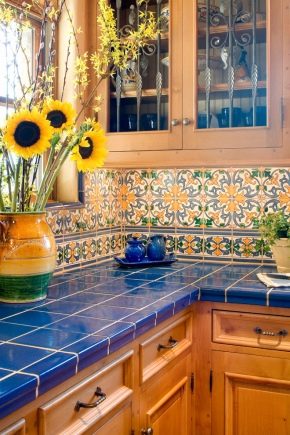
Ceramic tiles are considered the most popular finishing material for the kitchen, as they are of high quality and serve for a long time. Due to the variety of colors and textures, it complements any design in an original way, giving the room comfort and warmth. In addition, the product is easy to install; even a novice master can decorate with ceramics.
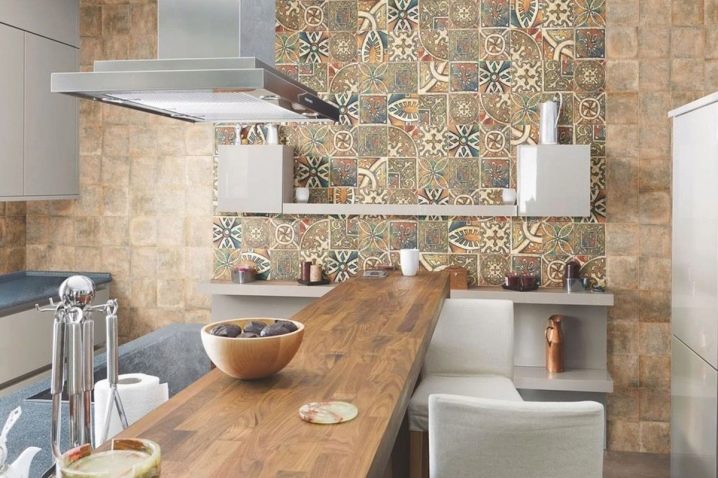
Peculiarities
Ceramic tiles are a modern building material that is produced in the form of plates and is intended for cladding walls and floors, characterized by a smooth surface. The cladding material can be of different sizes, which simplifies its installation. Ceramics are produced from natural raw materials, it includes a mixture of sand and clay, which, after being prepared, is sent for shaping and fired at a temperature of 900 to 125 ° C (depending on the type of product).
Thanks to this method of processing, the material acquires a stable structure and inertness. Ceramic tiles are not afraid of exposure to water and contact with chemicals, therefore they are ideal for the kitchen. To date, ceramic tile has found wide application in the design of various premises. From this material, you can lay out both solid surfaces and individual fragments with a specific theme.
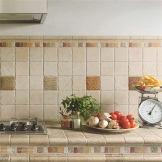
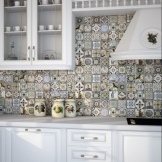
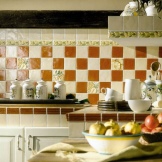
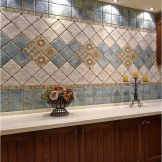
Advantages and disadvantages
Many homeowners choose ceramic tiles for kitchen decoration, since they are a natural material and do not harm human health. The product does not emit toxic substances into the environment, because they burn out during the production process, which involves high-temperature firing. In addition to environmental friendliness, this finishing material has other advantages.
- Inertia. After firing, the tile acquires resistance to the formation of mold and mildew, does not interact with chemicals. Due to this, it is often used for cladding surfaces in rooms with high humidity. In kitchens, ceramic tiles are most often used to decorate the work area, since it is this tile that is most exposed to water. The material retains all its characteristics when exposed to direct moisture.
- Wear resistance. If you follow all the technologies for laying tiles, it will be able to serve in the kitchen for more than a dozen years. Proper care also helps to extend the life of the finish. It must be regularly wiped off dust, grease and water droplets using special sponges or a soft cloth. Such tiles are not afraid of contact with abrasives, they retain their strong structure and attractive appearance for a long time. And also the material is resistant to direct sunlight and does not fade.
- Fire safety. The ceramic finishing material does not support the combustion process, which prevents the spread of fire in a fire.
- Huge selection of assortment. Due to the fact that the products are produced in various shapes, colors and sizes, it is easy to select them for any style of the room. Ceramic tiles are perfectly combined with other types of decorative finishes, this expands the possibilities of designers and allows you to embody the most original ideas into reality.
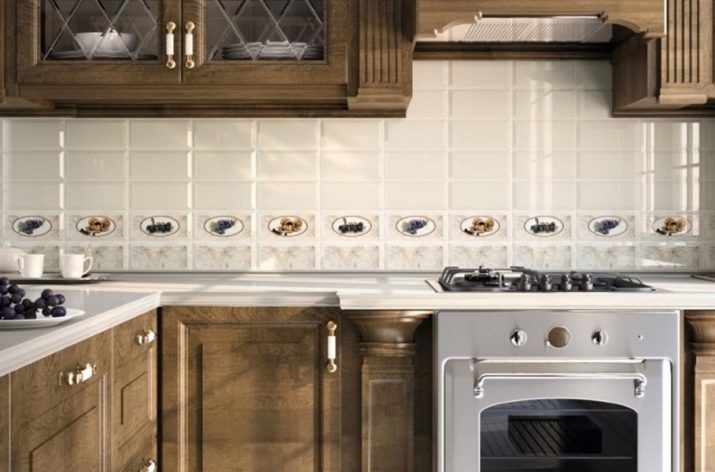
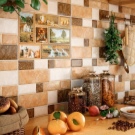
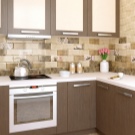
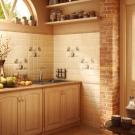
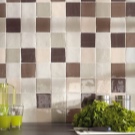
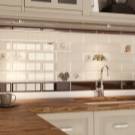
As for the shortcomings, this material has a high cost, some of its types are difficult to install, requiring a certain skill.If you wish, you can purchase a budget class tile, it is almost as good as expensive products in quality and looks no less original in the interior of kitchens.
Views
Ceramic kitchen tiles are considered the most suitable material for finishing surfaces that are often exposed to moisture and temperature extremes. Recently, the construction market has been represented by a chic assortment of products, while it can have different designs and characteristics. Depending on this, the facing product is divided into several types.
- With a glossy surface. This is the most common type of ceramics, which is easy to maintain and has a slight sheen. Finishing with this material allows you to fill a room with light and visually expand its space. Therefore, glossy white products are often chosen to decorate kitchen aprons. Their only drawback is that grease and water stains are more visible on them.
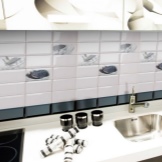
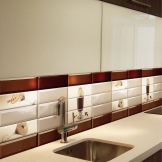
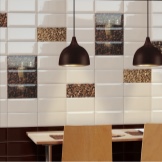

- With a matte surface. It has a rough surface and is often produced with an original texture. The decorative finish looks interesting in the kitchen, in which there is a combination of tiles, consisting of several textures. Since the matte surface is non-slip unlike the gloss, it is usually used for cladding kitchen floors.

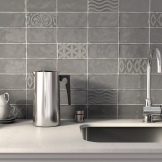
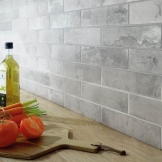
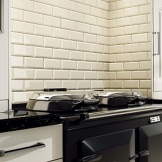
- Sprayed. It is a special type of ceramic product, the surface of which is decorated with decorative inserts. It looks unusual and original in the design of the kitchen, but it is expensive. Many stylists prefer to combine ceramics with a glossy, matte surface and dusting in finishing at the same time. This gives the room a special charm.
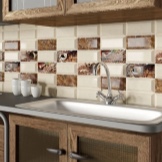
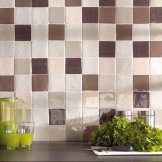
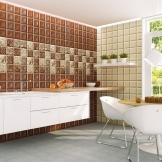
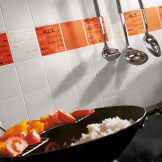
Ceramic tiles can also differ in the degree of protection against the effects of chemicals, it is subdivided into the following classes: A, B, C, AA and O. For kitchens, it is recommended to choose products marked A or AA, they have a thickness of up to 4 mm and are maximally resistant to detergents and cleaning agents. The sizes of ceramic tiles are 10 × 10, 20 × 20, 20 × 30 and 30 × 30 cm (usually used for flooring). According to the production method, decorative material is divided into pressed (it is obtained by pressing sand with clay) and extruded (made from a doughy mass that is passed through an extruder)

Design options
Ceramic tiles for the kitchen are available in various color designs, so they can be easily matched to any style of the room and are harmoniously combined with furniture and other decor items. Now on sale you can find both plain and patterned samples. Products in beige, white, pink and blue are very popular. They are often decorated with vinyl decals, which can be easily removed when changing designs in the kitchen. Tile with flowers is a wonderful decoration; it looks interesting in the interior, giving it an atmosphere of tenderness.

Material imitating wood or Gzhel is in great demand. Depending on the color of the countertop and the headset, it can be selected lighter or darker. To get a contrast in the design, it is recommended to use tiles of several shades, while it is important to pay attention to the main details of the interior and not overdo it with variety. For the design of the apron, ceramics of dull colors, with the image of abstraction and fruits, are considered an ideal solution. And also with ceramic tiles, you can lay out the surface of the walls in the form of a panel, choosing a specific theme.
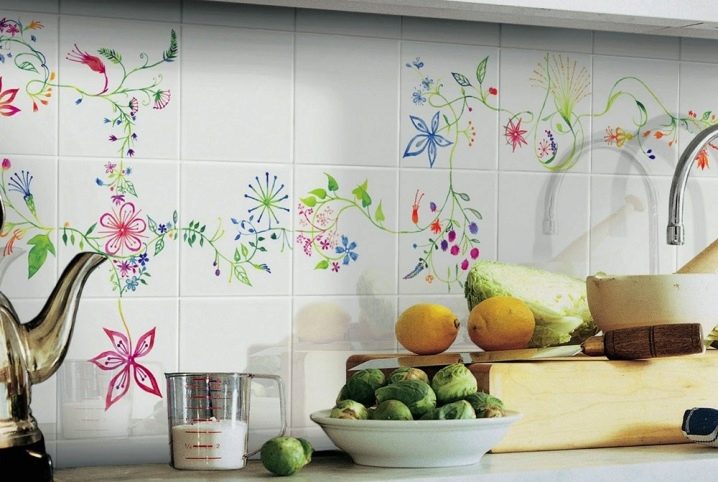
Products with imitation of marble, cobblestone or stone deserve special attention: they are often used in the design of country-style kitchens. The kitchen apron, tiled in patchwork style, looks original; for this, tiles with small floral patterns are selected. For the loft style, designers recommend purchasing matte ceramic tiles with imitation of concrete or brick, it must be supplemented with glass and metal decor items.Tiles in oriental style will also help to create an unusual design: with the image of sakura flowers and hieroglyphs.
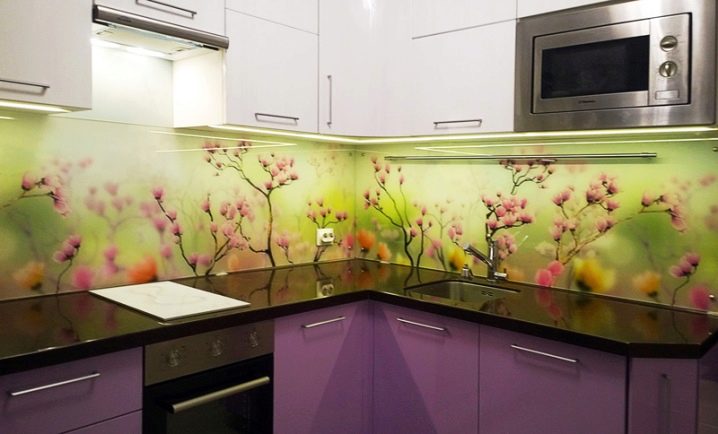
How to choose?
Spain and Italy are considered to be the largest countries producing ceramic tiles for the kitchen; they constantly replenish the European market with new products, which are characterized by high quality. In this case, the finishing material may differ in design and performance. Italian products have classic side dimensions from 10 to 50 cm and large-sized samples from 50 to 120 cm. Medium-sized samples are usually used to decorate the kitchen wall. To do this, they need to acquire different forms and create a complex panel on a monotonous basis. Spanish tiles in the form of large squares are well suited for the floor; their dimensions can be from 10 × 10 to 120 × 120 cm, and the thickness does not exceed 6 mm.
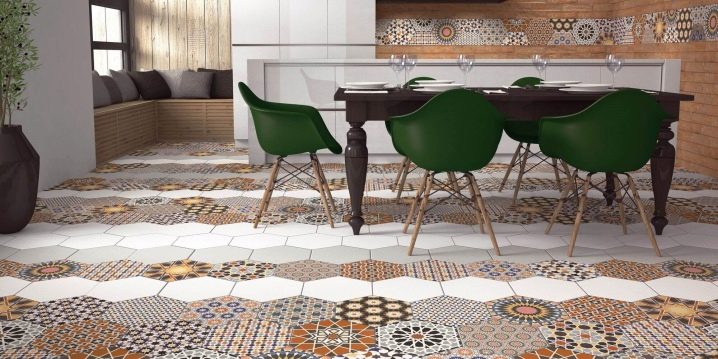
Walls can also be covered with Spanish ceramics., for this it is worth choosing rectangular samples, which are produced in common sizes 20 × 25, 20 × 30, 12 × 24, 15 × 15 and 15 × 20 cm.The thickness of such products is 4 mm. Since a product of this type is expensive, then before purchasing it is necessary to correctly make calculations and give preference to those samples, the dimensions of which will be multiples of the area of the surface to be trimmed. This will reduce material consumption and waste.
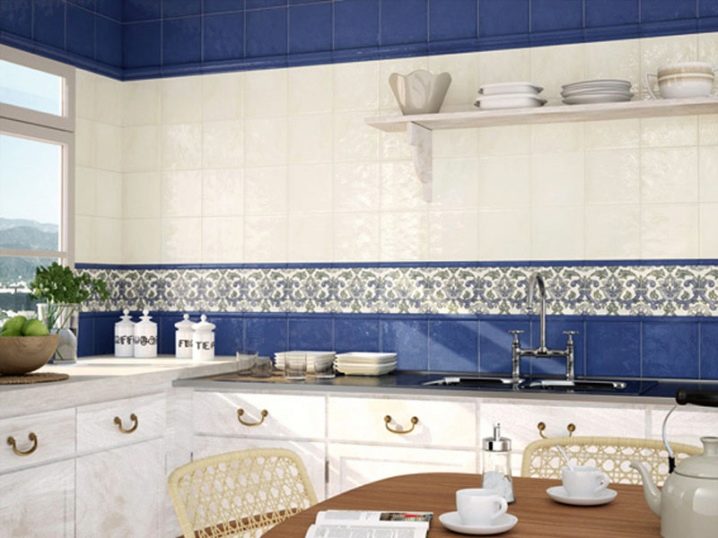
As for the choice of design, the Italian tiles are characterized by minimalism and restraint, while the Spanish ones, on the contrary, attract with shine and relief play. If the interior provides for the presence of floral motifs in the form of bouquets and vegetation, then it is better to buy Spanish products. It is distinguished by the symmetry of the patterns. English ceramics are perfect for classic-style kitchens: they are of high quality and are available in a rich color palette.
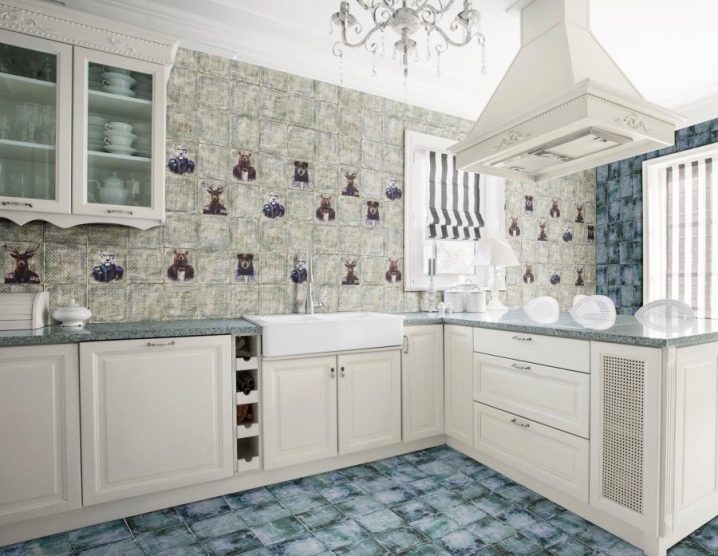
You should also pay attention to the degree of protection of the material, as it will be constantly exposed to fumes from cooking. The material should be easy to clean, especially for flooring that is contaminated with food particles. Plays an important role in the choice and durability of finishes. If ceramics are afraid of wet cleaning with cleaning agents, they will quickly lose their attractive appearance. Therefore, it is advisable to purchase products with AA protection class.
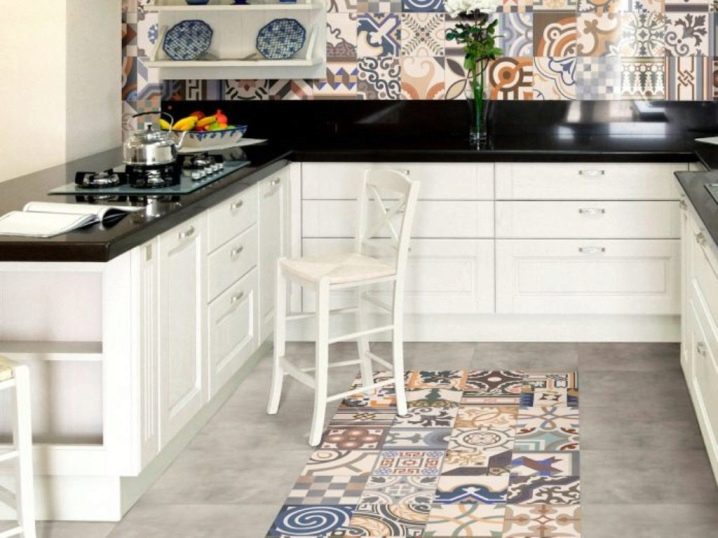
Ceramic with a rough surface is perfect for the kitchen, while it should have a finely porous structure: this will facilitate cleaning. For wall cladding, experts recommend using a material with a small degree of perversity, since it will not be subjected to high loads and is cheaper. In the event that natural wood is present in the interior, the kitchen can be additionally decorated with wood-like tile inserts. It is matched to the color of the headset and laid out in the working or dining area.
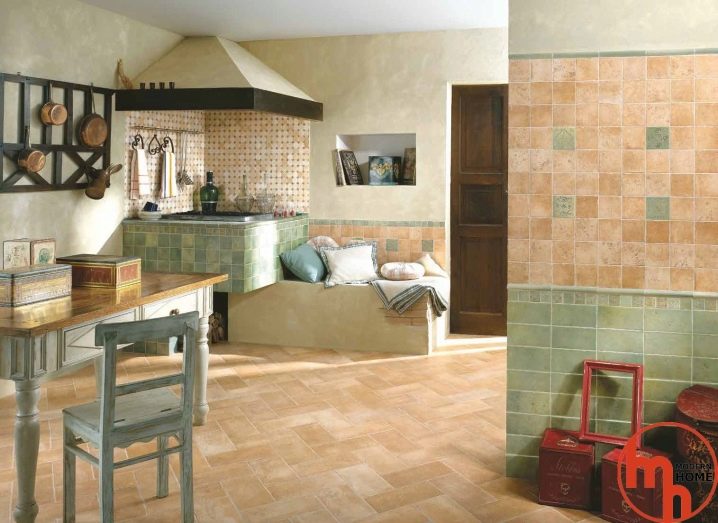
For information on how to choose ceramic tiles for the kitchen, see the next video.













The comment was sent successfully.